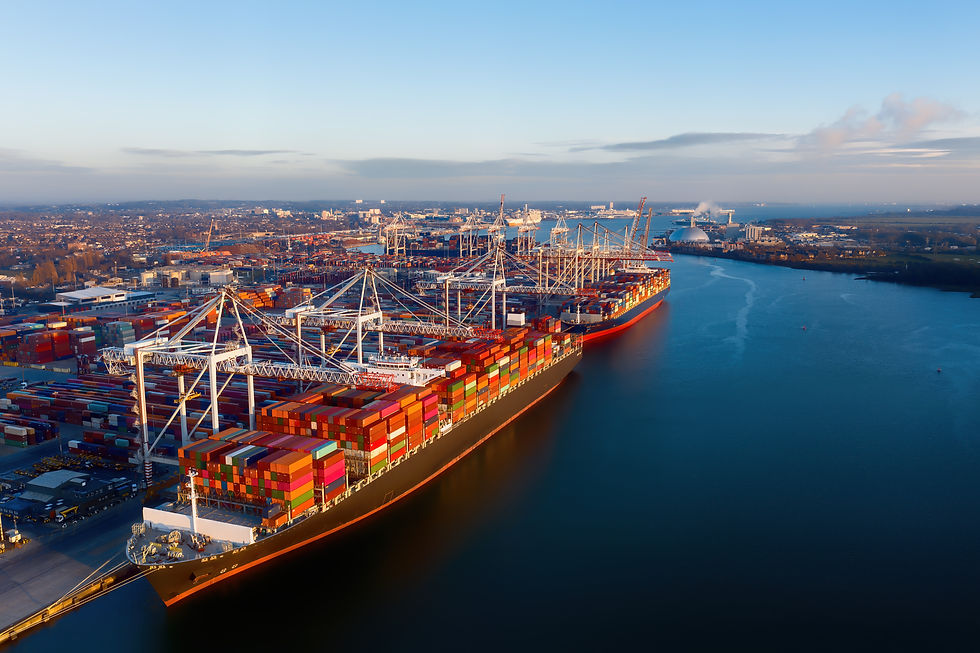EU what? A simple guide to the EU ETS, its impacts, and what action you can take
- bjornaakre
- Oct 27, 2023
- 5 min read
Updated: Nov 24, 2025

Jacob Clausen, Performance Director, NAVTOR, simplifies the complexities of the EU Emissions Trading Scheme (ETS) with a high-level look at the regulatory horizon, allied to a clear lowdown on how shipowners and operators can mitigate risks, manage costs and comply, comply, comply.
The EU ETS for shipping landed with a colossal splash on 16 May this year, when it was officially adopted and finalized. But it won’t be until 1 January next year that the industry feels the true ripple effects.
So, is it time for owners and operators to batten down the hatches, or will adequate foresight and planning ensure these ripples don’t turn into tsunamis?
EU ETS - What is it?
Firstly, it’s important to recognize that the EU ETS isn’t ‘new’.
The measure, which is seen as a key enabler in the body’s drive to become carbon neutral by 2050 (with a 50% reduction in greenhouse gas emissions by 2030), was introduced in 2005 and already covers thousands of installations, such as power stations and chemical plants, in addition to airlines. In this sense it’s tried and tested.
Essentially it works as a market-driven system that creates financial incentives for businesses, in this case shipping, to reduce emissions and transition to more sustainable practices. It does so by requiring a ‘shipping company’ – which can be the owner, manager or bareboat charterer – to buy Emission Allowances, with each allowance covering one ton of CO2e emitted from the New Year. In 2026 the scheme will be expanded to include CH4 (methane) and N2O (nitrous oxide) emissions.
As such it introduces the concept of carbon pricing for maritime operations to and from EU ports – obliging companies to pay for their emissions, and thus encouraging them to reduce carbon footprints.
How does it work?
The ETS is based on a cap-and-trade principle, limiting the total amount of greenhouse gas emissions in the system, ensuring companies can’t just ‘buy themselves out of trouble’ by paying for ever-increasing pollution. Over time the cap will be reduced, with the cost of allowances rising.
The ‘trade’ element refers to the fact that allowances can be bought via official auctions or through spot, futures and options, with trading on exchanges such as ICE, EEX and Nasdaq. In this respect, companies have an opportunity to optimise their costs by buying (and potentially selling) at opportune times.
The need for allowances is worked out according to EU MRV reporting, presented to the EU by March (the following year) with the correct number of allowances then required to be submitted by the end of September. Be warned: A failure to do so will incur heavy financial penalties.
In a bid to ease the implementation of what many see as a “watershed” regulation (others may use less charitable language), the EU will only require allowances for 40% of verified emissions in 2024, rising to 70% in 2025, and 100% in 2026.

What can you do?
Firstly, get solid foundations in place.
An advanced fleet and vessel monitoring and management solution will allow you to ‘know your ships’ inside-out, automating the collection of critical data and giving you (literally) priceless insights into real-time operations.
This will allow you to constantly monitor, trouble-shoot and optimise performance, empowering decision making that delivers both environmental and business benefits. On single ships this can potentially slash the need for allowances, while across fleets it could be transformational.
Such systems should also cover your reporting needs. This delivers efficiencies in terms of automating tasks, and reducing human error, while ensuring that the data delivers an accurate picture of performance to regulators. With this in mind, validation is key.
Here at NAVTOR we’d recommend a dual validation process, with your specialist software of choice backed up by human validation from subject matter experts.
It pays to be thorough when any deviations from compliance come at such a cost.
How can you minimize risk and financial exposure?
When you have optimal foundations in place you can look at building the best strategy for your business.
Establishing an overview of your forecasted allowances for the year ahead will allow you to understand your potential exposure, from which – perhaps in consultation with experts – you can define a sourcing strategy that allows you to optimise costs (buying and selling at the right time, across the right channels).
Alternative fuels are also a key consideration, with the cost of allowances potentially making biofuels, which on the face of it are more expensive, much better value for money (due to lower carbon factors).
And remember, your monitoring and management solution will allow you to regularly update your emissions profile, potentially helping you reduce your need for allowances.
Finally, it makes sound financial sense for owners to maximise the time their vessels spend under time charter, allowing them to pass the cost of allowances on to the charterer.
On that note…
How can owners redeem allowance costs from charterers?
It’s not vessel ownership that matters when it comes to paying for allowances, but rather which party provides and pays for fuel.
Owners therefore need to ensure they deliver reliable, validated vessel emissions data to charterers in a timely manner (BIMCO proposes a clause whereby owners provide this within the first seven days of each month, covering the previous month’s allowance requirement).
But, to do that, we come back to the need to have a robust, reliable, real-time monitoring and management system.
This will create true transparency, and therefore trust, with regards to ongoing emissions data, monitoring progress (issuing statements under voyages and time charters) and ensuring allowances are transferred in accordance with requirements.
There should be no room for argument with a system that, although complex at first glance, is based on pure, hard data.
That is, of course, as long as you have high quality data in the first place!

Smooth sailing into 2024, and beyond
Although the introduction of regulations that potentially incur significant costs may not be universally applauded by the industry, it really does pay to see the bigger picture here.
The most important factor, naturally, is that we need to take action to reduce emissions and mitigate climate change. In this respect, any tool that incentivises businesses to do so is a step in the right direction.
However, we shouldn’t lose sight of the commercial opportunity here too.
With careful monitoring, management and informed decision-making compliance can come with a benefit rather than at a cost – paving the way for reduced fuel expenditure, more efficient energy use, and a strong business, rather than purely environmental, case to transition to more sustainable practices.
Time will tell how effective the EU ETS proves to be. But with the right, informed strategy in place, it needn’t be something to be feared, but rather welcomed… by shipping industry stakeholders, as well as the rest of society.



